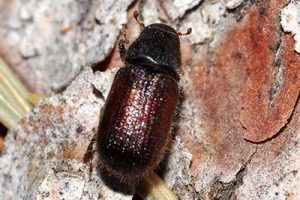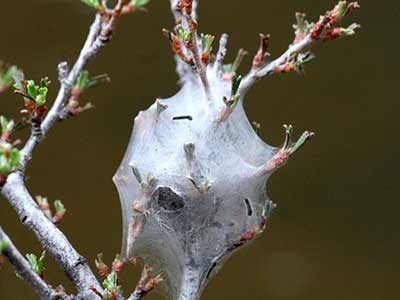Cañon City Field Office – Insects & Diseases
Insects and diseases can pose serious threats to a forest’s health. Our foresters monitor insect and disease activity and trends, and respond to emerging threats to our communities’ forests.
Insect & Disease Concerns
By properly identifying the tree’s species and examining the specific symptoms of damage, you can make a reasonable diagnosis of the problem and select the proper treatment using this guide to Systematic Plant Evaluation.
If your questions cannot be resolved with the information provided, please email the Cañon City Field Office or call us at (719) 275-6865. Our foresters are available for consultation regarding insect and disease concerns.
Statewide Publication
Local Insects & Diseases
The following contains information on insect and disease concerns specific to our district, though not limited to these. Our Publications page and the field guide linked at the bottom of this page contain information on a wider range of insect and disease concerns.
Engelmann Spruce
- Engelmann Spruce Beetle (500 KB PDF)
Douglas-Fir & Fir
- The Budworms are Back! (CSFS presentation, April 2017, 1.1 MB PDF)
- NPIC Pesticides Comparison (200 KB PDF)
- Western Spruce Budworm (Overview, 2016, 5.6 MB PDF)
White Fir
- Fir Engraver Beetle (6.8 MB PDF)
Ponderosa Pine
- Mountain Pine Beetle (10.7 MB PDF)
Piñon Pine
- Pinyon Pine Diseases & Insects (3.1 MB PDF)
Cottonwoods
- Tent Caterpillar (4.3 MB PDF)
Black Walnut
- Thousand Cankers Disease (340 KB PDF)
Dwarf Mistletoe



Adult spruce beetle and eggs. Photo: Dan West

Western tent caterpillar larvae. Photo: W. M. Ciesla

Tent of western tent caterpillar. Photo: CSFS
Emerald Ash Borer
 Emerald ash borer (EAB) is an invasive insect of Ash species and is native to Asia. First introduced in the Great Lakes Region, likely on shipping material, it has now spread throughout much of the east.
Emerald ash borer (EAB) is an invasive insect of Ash species and is native to Asia. First introduced in the Great Lakes Region, likely on shipping material, it has now spread throughout much of the east.
EAB in Colorado
In 2013, EAB was discovered in Boulder, Colorado. It was likely transported hundreds of miles on firewood material. This is a sound reminder to only buy and use firewood locally.
As of December 2019 EAB has been confirmed in unincorporated Larimer County and in the cities of Boulder, Gunbarrel, Longmont, Lafayette, Lyons, Superior, Broomfield and Westminster.
As the potential impact on Colorado’s urban forests and the services they provide are immense, it is important to stay informed on the subject. The following quick guide provides some important information on Emerald Ash Borer.
Field Guide
The following field guide was created by the U.S. Forest Service. It is specific to the Rocky Mountains and can serve as a useful and comprehensive tool to help you identify insects and diseases of concern.

